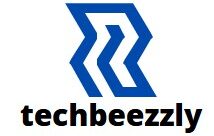
Communication plays a vital role in the development of future professionals. From students to administrators, maintaining seamless communication among the stakeholders is challenging. Is there a way to streamline this among students, parents, and staff?
In most cases, traditional communication methods fail to meet the demands of institutions. They cannot provide the efficient and fast connectivity needed today. Now, this is where internal communication software comes in.
Do you want to know how internal communication software benefits academic institutions? Read on to learn more!
Internal Communication
Internal communication refers to information exchange in an organization. It promotes effective interaction among its members. In higher education institutions, this goes beyond the contact involving their stakeholders.
Internal communication strives to align individuals with organizational goals. It is a process that uses different channels and tools to ensure a seamless flow of information. Clear and efficient communication helps spread information about academic activities.
If an academe persists in using traditional methods, meeting demands will be much harder. It can cause inefficiencies, miscommunication, and delays.
Higher education institutions must integrate internal communication software into their systems. It can streamline processes, help with collaboration, and promote engagement.
Benefits of Using Internal Communication Software
College and university students and staff have to digest a lot of information daily. Aside from attending personalized class schedules, they may also have part-time jobs or extracurricular activities. Communication is so hard because colleges and universities are too large and complex.
Here’s how internal communication software can provide better channels for students and faculty.
Enhanced Teamwork
From lower to higher education, students often engage in group activities. These projects, assignments, and discussions allow them to improve learning and teamwork.
Unfortunately, traditional communication methods are prone to misunderstandings. One instance of miscommunication can impact productivity, performance, and outcomes.
With internal communication software, the institution can break down the barriers. It provides a centralized platform for real-time, enhanced collaboration. With features like instant messaging and file sharing, working together becomes a lot easier.
Communication software boosts collaboration culture. Stakeholders can determine who did their part and who did not. It goes beyond physical and departmental boundaries, enhancing education quality and administrative processes.
Improved Student Engagement
One factor in the success of a higher education institution is student engagement. In an academic setting, this refers to the psychological investment of a student in learning.
It includes how they take part in activities. Student engagement is a multidimensional concept that involves behavioral and emotional displays. It holds together the different aspects of learning and growth.
In improving student engagement, internal communication software plays a vital role. It is a platform that provides interactive and personalized communication. For efficient use, developers consider the gap between the demands of the stakeholders.
Through chat, discussion, and channel features, students can join different events.
Moreover, the institution can integrate the software into the learning management systems. It creates a good experience for students to access course materials and discuss. With this, students can foster a sense of community among each other.
Streamlined Information Dissemination
Getting accurate campus news and updates can feel like a game of telephone. In higher education, the timely and accurate dissemination of information is crucial. A constant information flow is necessary to reach the audience on time.
The software can split communications channels based on roles and responsibilities. You can guarantee to deliver relevant information to their intended audience. It reduces information overload and allows recipients to focus on what matters.
Most internal communication software comes with notification features. It ensures that users receive crucial updates on time. As a result, it prevents delays that can disturb productivity.
Strengthened Communication
Strengthened communication is another benefit of using internal communication software.
In crises, effective communication becomes more crucial. It ensures information reaches the audience on time and reduces confusion. At this age, how can a higher education institution achieve this?
Through internal communication software, you can use reliable channels to disseminate information. It streamlines the process by integrating features. For instance, most communication software uses emergency alerts, push notifications, and real-time updates.
This ensures every user stays informed without delay and responds as needed.
For effective communication, the software allows two-way communication. Stakeholders can use this to provide feedback, answer questions, or address concerns. For instance, students can ask their instructor for clarification about an announcement.
Integrating a transparent and responsive approach builds trust within the community.
Data-Driven Decision-Making
Did you know that the average number of data produced a day is 2.5 quintillion bytes? Regardless of the field, data is a powerful tool used in decision-making. It provides insights, identifies patterns, and promotes informed choices.
Integrating internal communication software in higher education can help in decision-making. Tracking user interactions allows institutions to understand how information spreads. It offers insight into how users consume and share information.
With this approach, higher education institutions can develop effective communication strategies. It helps them identify areas to improve and customize messages. Administrators can adjust their methods to boost content engagement.
Salesforce for Higher Education
To streamline processes for stakeholders, consider integrating Salesforce for higher education. What is Salesforce? It is a data model using tools to enhance students’ learning experience.
The goal is to reduce the time spent on manual processes. Instead of wasting time, users can build relationships with other people. One of the best solutions to consider is using Fastcall.
What is Fastcall? It is a communication tool used to contact stakeholders within Salesforce. This includes using video conferencing and screen sharing.
With Fastcall, users can save time and be more efficient.
Combining Salesforce and Fastcall allows institutions to reach out to prospects for follow-ups. For instance, parents get status updates about their child’s performance, and students get real-time notifications about assignments.
Everything About Internal Communication Software for Higher Education
As the academic landscape evolves, integrating internal communication software is crucial. It promotes collaboration, streamlines information dissemination, and allows data-driven decision-making. With this technology, higher education institutions can address different challenges they face.
Want to learn more about the latest and most helpful apps for productivity? Check out our other blog posts for more informative guides.
